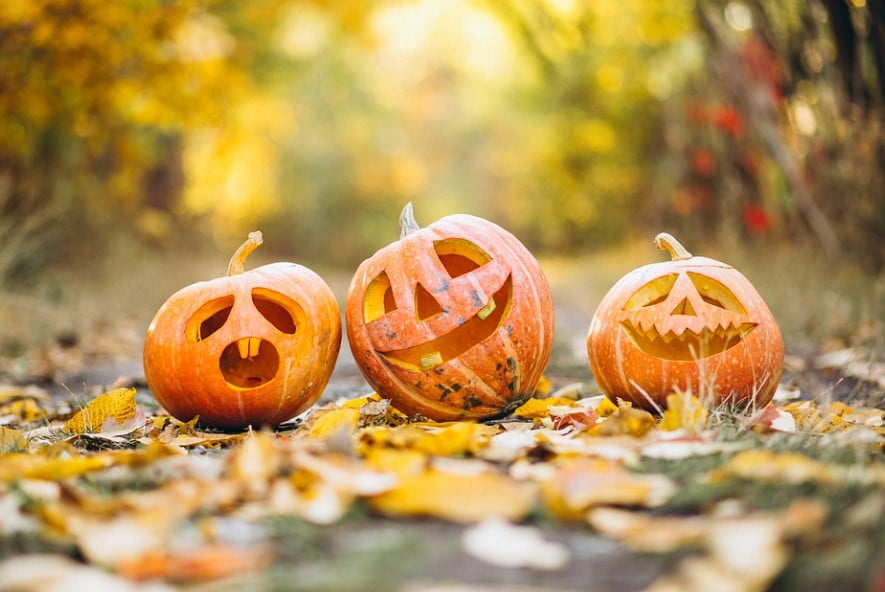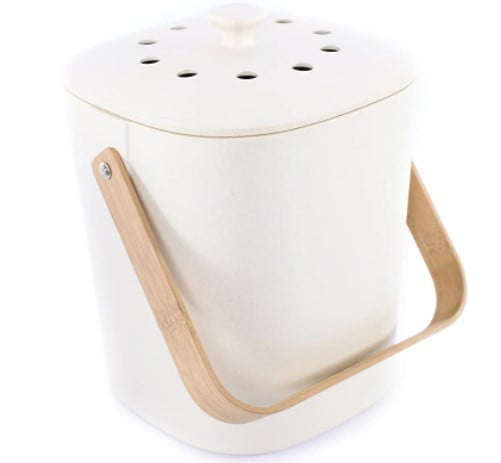So Halloween has come and go, and if you go all out on decorations, chances are you are left with too many carved pumpkins so you probably wonder, what to do with pumpkins after Halloween? Well, glad you asked!
Today we’ll be sharing with you different ways and ideas regarding what to do with pumpkins after Halloween and we are happy to share them with you.
Halloween pumpkins certainly leave you with a lot of waste, now you can imagine how millions of tonnes of usable gourds are sent to landfills annually. So if you’ve been looking for an eco-friendly way to recycle or reuse your pumpkins, you have come to the right place. Pumpkins happen to be a great raw resource with a variety of benefits and use around the home.
You’ll be surprised to know that there are actually a number of uses for pumpkins after Halloween other than ending up in your trash. In fact, we dare to say that after reading these tips and tricks, you won’t be throwing away your pumpkins anymore, since you can put them to good use in both your home and garden. If you wish to know more, continue reading and learn what to do with pumpkins after Halloween.
What to do with Pumpkins after Halloween FAQs
Can you eat carved pumpkins?
This is not recommended for a carved pumpkin, especially one that’s been sitting out for a few days. That’s because they can become contaminated with pathogens, making the pumpkin unsafe to eat.
Use only uncarved/uncut pumpkins for food. Once you cut into a pumpkin, even to shallowly carve the surface or stick a toothpick in to hold a decoration, you start that two-hour food safety clock running, after which the pumpkin won’t be safe to eat, even if you cook it.
Can leftover pumpkins be frozen?
Most pumpkin recipes call for pumpkin puree, so why not get prepared with a stash of ready-made portions in your freezer? All you need to do is cut the pumpkin flesh into chunks before steaming them until soft. Then, mash and leave to cool. Pop it into freezer bags and store it in the freezer, ready to use.
How long do you leave pumpkins out after Halloween?
There’s no timeline on this, it depends on whether you styled your gourds for Halloween in particular or if they were already part of a fall porch decor display. It also depends on when you first purchased and put them out but usually fresh pumpkins will last for a good 2-3 weeks before they are visually past their best.
Can you feed animals with pumpkins after Halloween?
You can let animals like squirrels, birds, and badgers feed on your pumpkins, ensuring you’ve removed any decorations, candle wax, and so on. Of course, if you used any bleach to help keep your pumpkins from rotting over the season or if you painted a pumpkin as opposed to carving it, then you need to keep these out of reach of animals.
Do pumpkins attract rats?
Pumpkins are a treat for all kinds of animals, mice and rats included. Leaving yours out for wildlife can attract them, so if this doesn’t appeal, it’s best avoided.
What to do with Pumpkins after Halloween Ideas
#1 Make a Pie/Soup
When carving your pumpkin, save the bits that are cut off and use them to make a pie or some bread. Seeds can be roasted and eaten as a snack, on their own, or incorporated into a salad.
The “meat” inside a pumpkin, once the seeds and stringy interior have been scooped out, can be made into fresh pumpkin puree and used in a pie. Whether you have a secret pumpkin pie spice recipe or want to use a great recipe from another source, this is an easy, easy way to use up the pumpkin.
If you prefer savory food over sweet, try roasting the pumpkin and blending it into soup. Even small pumpkins can produce enough meat to make a lot of soup for leftovers.
#2 Make a Latte
Most “pumpkin spice” items contain just the spices used in pumpkin pies. However, if you have a little extra puree left after making pie or soup, use it for a latte. With milk, a little coffee, spices, and a couple of tablespoons of puree, you can have a homemade pumpkin spice latte for you and a friend in a few minutes.
Ingredients
- 4 cups of Vita Coco coconut milk
- ½ cup pumpkin puree
- ¼ cup maple syrup
- ½ tsp pumpkin spice mix
- 2 shots of coffee (optional)
- Whipped cream, a sprinkle of pumpkin spice, and 2 x cinnamon sticks, to finish
Directions:
- Put all of the ingredients into a blender and whizz together until smooth, then pour into a medium-sized pan and heat over medium-high temperature until heated through.
- Divide between two large glasses and top with whipped cream and a sprinkle of pumpkin spice.
- Add a couple of cinnamon sticks and enjoy.
#3 Pumpkin Beauty Products
Pumpkins are full of vitamins that are great for your body but are also lovely for your skin, so before you throw out your leftover pumpkin, make a face mask! Scrape out any of the flesh inside and blend to get a puree, then add in 1/2 a tablespoon of honey and 1/2 a tablespoon of milk (you can use an alternative too). Mix it all together, apply it to your face and leave for 20 minutes. The mask will be bright orange.
#4 Feed Birds
Many birds will eat pumpkin seeds, and some animals will eat the leftover flesh. You can cut up small pieces and leave seeds in a bird feeder or leave pumpkin bits in your backyard. You may also want to consider bringing some to a wooded area and sprinkling some bits around for animals to find.
#5 Turn it into a Planter
Fill your pumpkin with soil and add some seeds or plants. You’ve got yourself an instant plant pot. As the pumpkin decomposes, it will add nutrients to the soil. If the planter starts to look unsightly, you can put the whole thing inside a larger, traditional pot.
#6 Donate it
You’ve cooked, pureed, and crafted as much as you can, and still, you have a whole pumpkin staring at you in your kitchen. Clean off the pumpkin and call your local zoo or animal shelter. A lot of animals like pumpkins and get a real treat every November when patches and farms bring over their remaining pumpkins. There’s no guarantee the zoo will accept pumpkins from everyone, but call and find out.
#7 Compost it
Pumpkins are great for composting. Just make sure you wipe off any paint or wax and remove the candles before adding them to the bin. If you don’t compost, you can bury the pumpkin in your garden. It will decompose quickly and provide nutrients for the soil.
Chopping it up or smashing it beforehand will help it decompose faster. It’s easy to chop up your Halloween pumpkin and put it in a counter-top composting machine.
Bamboozle Food Compost Bin
Convert your own organic waste into compost to enrich the soil in your backyard. Made of biodegradable, dishwasher safe, and durable bamboo fiber.
Extremely strong, moisture resistant, heat tolerant, and dishwasher safe. Made to sustain everyday use and tough enough to be enjoyed for years.
Uses excess raw materials of fast-growing, bamboo that can be harvested frequently without damaging the soil or landscape.
Features:
- Bamboo
- Easy to Use
- Indoor Food Composter
Dual Chamber Tumbling Composter
The tumbling design makes mixing easy and efficient. Just close the door and turn it 5-6 times every 2-3 days. In hot sunny conditions and with a proper balance of ingredients the compost can finish in as little as 2 weeks.
The large openings and removable door make it easy to add scraps/clippings and remove finished compost. Deep Fins on the body provide great ergonomic handholds.
Two separate sides allow the first side to finish while leaving the second side available to add fresh scraps/clippings. Continuously swapping sides after finishing will create an uninterrupted flow of rich, healthy compost.
Features:
- BPA-Free
- UV Inhibited
- Durable





